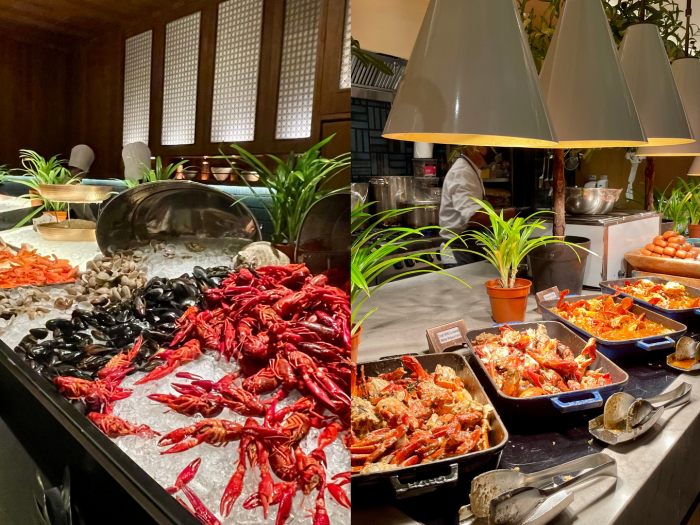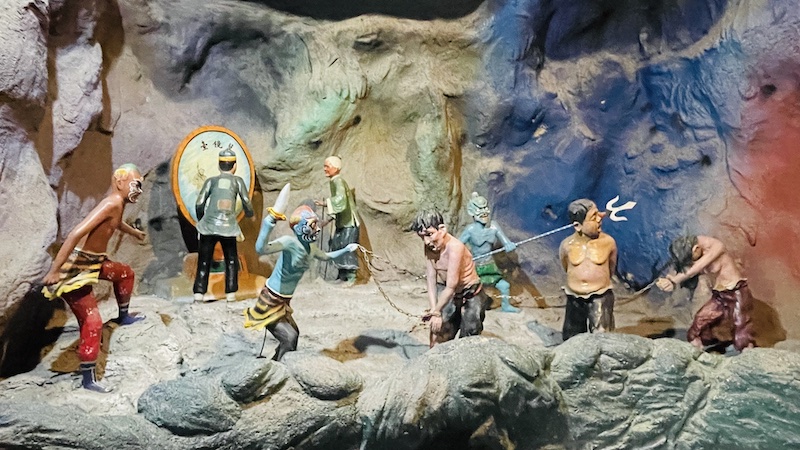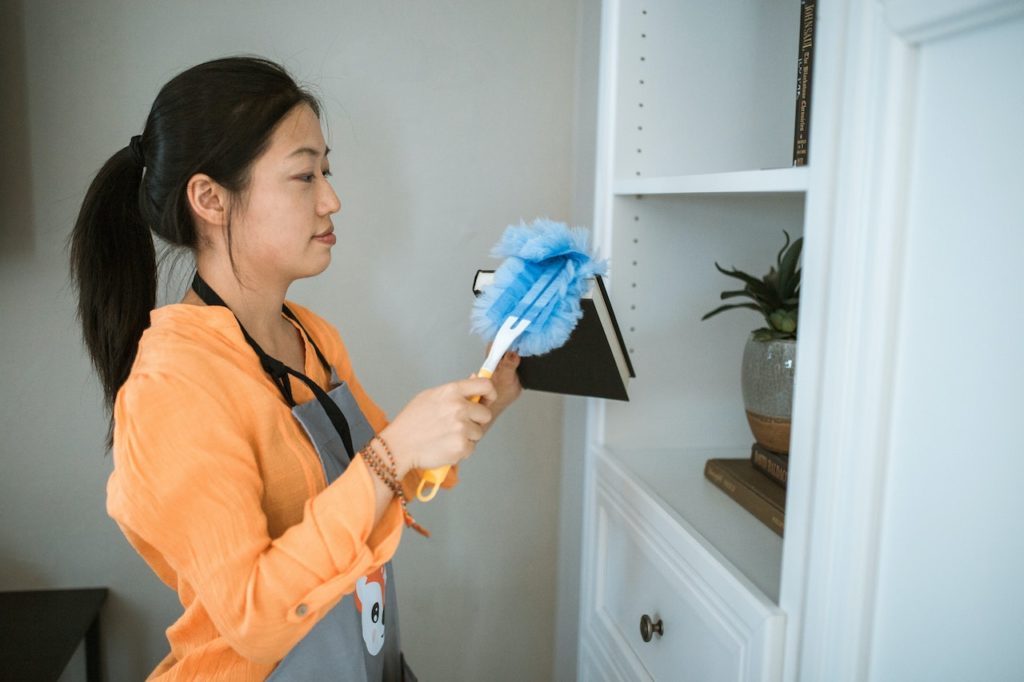Types of Hardwood
Hardwood Types
Ash
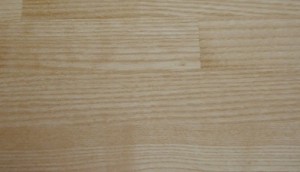
Ash is a medium hard wood and has versatile characteristics. It is pale in colour and the grains run straight. It has a tough and hard texture yet very flexible in application. It can be used in veneers in cabinetry works, as well as finishes and woodwork for furniture, doors, cladding and flooring. As it has excellent shock resistant quality, thus apart from using ash wood for flooring, ash is also a popular choice for making sports equipment like bats, as well as garden tools. It is frequently used in modern contemporary designs where neutral, cream and nude colours are sought in creating a simple, warm and clean interior.
Beech
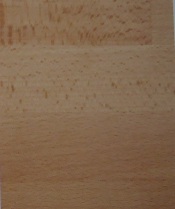
Beech wood is a medium hard wood that has even grain structure and of pale cream light colour, sometimes with a slight pink hue to it. The American beech species has a distinctive display of dotted grains or tiny slits which makes beech wood easily identifiable. It is very easy to work with and has high flexibility in bending due to its high fiber density and elastic memory quality. Because of this and its high shock resistance ability and strong nature, it is often used in the manufacture of bentwood furniture and even some sports equipment like bats. Beech wood is also commonly used in veneers for carpentry works, crates & pallets, cladding, decking and flooring. Beech costs comparatively low in prices and is considered good value for money considering its strength and hardness in quality.
Birch
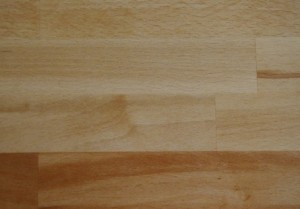
Birch is a light toned pale colour wood with grains that are fine and are usually straight running but occasionally comes with whorled figuring or curly grain patterns. It has a fine and uniform texture due to its closed pore properties, and this makes it very easy for staining. While Birch wood may not be particularly strong, it is a popular domestic hardwood given its low cost and gives beautiful finish. It is often applied in plywood, veneers, finishes to carpentry & furniture.
Cherry
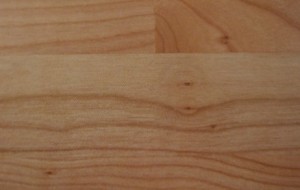
The heartwood is often darker and has a redder tone than its sapwood. During lumber, woodworkers often treat cherry sapwood lumbers and bleed them from the heartwood to have the same uniform color. Cherry darkens naturally on exposure, thus they are fairly easy to work with and able to bend. Cherry usually comes with fine, even and straight grains unless on quarter-sawn (cut radially), will have wavy grain patterns. Cherry is seen mostly used on cabinetry works such as wardrobes, consoles, tables and other furniture. It is also used in flooring and veneers and as contrasting borders on hardwood flooring in outline bordering a room, or demarcating a dining area for instance.
Maple
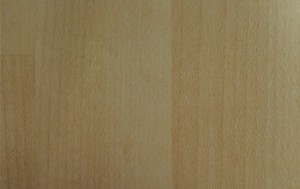
Maple is nearly fair and white in colour, with straight grains and is of a fine texture. It is of medium hard density, highly durable and is resistant to wearing. It is often sent for steam-bending as it is pliable and are used to make versatile forms of furniture. As with other timber or woods that will darken over time, maple tends to yellow over time. Maple wood is not easy to stain as it is not exactly porous, it is at its best in its natural colour. Due to its hard and dent resistant nature, maple is often a popular choice for heavy duty flooring where heavy traffic is, such as flooring for a gymnasium, dance studio, bowling alleys or squash or basketball courts.
Oak
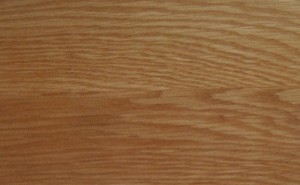
Oak is a pale to mid-brown wood that weathers well over time to a darkened velvety grey appearance. Its course and open-grained texture is often what makes it resistant to deep scratches and dent, an essential characteristic for outdoor furniture and outdoor decking such as ship’s decking. Apart from its lastingness and the fact that it graces with age, oak is also known for its consistency in grain patterns and this also explains why oak costs more than most other wood species.
Mahogany
Mahogany is a popular wood choice for durable flooring for its dark and rich appearance and fine grain texture. The benefits of using mahogany wood include strength, resistance to pests and woodworm, and the fact that they are easy to carve and work with. It is especially popular in the use of interior carpentry, furniture, veneers and flooring.
Iroko
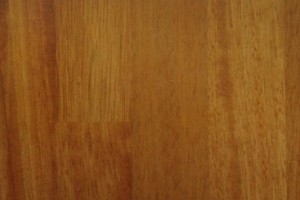
The appearance of iroko wood is similar to that of Teak. Iroko wood is a medium hard wood with straight grains and is extremely durable. Apart from applying iroko on exterior and interior capentry, paneling and cladding, countertops, worktops, flooring, veneers and cabinetry, iroko wood can be used as a substitute for teak in some works.
Ironwood
Ironwood is known for its extreme hardness and durability. It is warm in colour, and has fine twisted grains. Apart from using ironwood for furniture and cabinetry, ironwood is also suitable for stairs and floors.
Jatoba
Jatoba is a Brazilian cherry wood that is warm toned with reddish tint and with fine grains. It’s most distinctive characteristic is that it is extremely hard and dense. Its consistent interlocked grains make it sometimes rough and difficult to handle. Jatoba wood is easily available and is widely used in both residential and commercial projects.
Elm
Elm wood is a mid-toned, medium grained wood. Because elm wood is pliant and bends easily, they are often only used for interior carpentry, cabinetry and small furniture. Despite this, elm is regarded as valuable wood due to its water-resistant properties. Elm trees are noted for their aesthetics, and thus are popular for garden landscaping.
Wenge
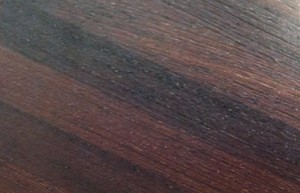
Wenge wood has a very dark colour, and has straight grains. It is noted for its extreme hardness and durability, which is why wenge wood is ideal for flooring purpose. 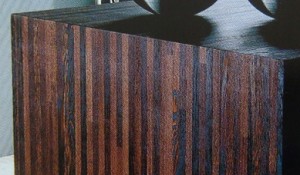
Due to its hardness, wenge wood is resistant to dents and is suitable for use in high traffic areas, such as the hallway, foyer & lounge area of homes. Wenge has a dark, rich, ebony chocolate tone with striking straight grains, making it an elegant choice for both residential as well as commercial projects for boardrooms, lounges and wine tasting rooms. Its dark tone also makes it ideal for parquet borders and motifs in creating contrast and floor patterns.
Teak
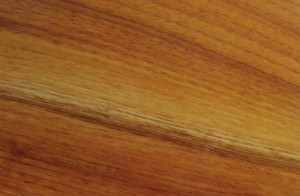
Teak wood exists from mid to dark tones, has straight grains and is of coarse texture. It has a natural oiliness to it and this is what makes teak wood highly weather-resistant and durable. Teak is resistant to stains and spills and is able to withstand friction without scratching. Burmese teak carries high oil content and has a warm, honey brown tone that gives home a warm and luxurious style. Teak wood is commonly applied on both exterior and interior carpentry works, veneers, cabinets and floors. Today, teak remains as one of the best hardwoods for flooring due to its long-lasting qualities.
Walnut
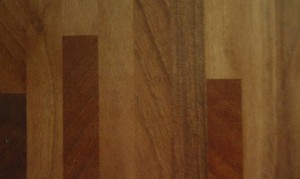
The wood of a walnut tree is warm brown to dark toned and beautifully figured. It has a coarse texture with either straight or wavy grains, and sometimes come with knots. It is very easy to work with and is a soft to medium hardness timber. Walnut wood is known for its beauty of its figuring; the natural grain patterns give flooring its character and a charming feel that set a serenading but warm mood to the house or business premises.
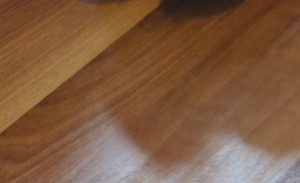
Walnut is often used in contemporary home designs. Because it is easy to work with and highly flexible, walnut is commonly used in joinery works and veneers in cabinetry or kitchen countertops apart from flooring and furniture.
Sycamore
Sycamore wood is a hardwood that is a creamy white wood with straight running grains. The grains can be course and sometimes the wood comes in a flaky appearance. Because it is a natural cream white lumber with faint annular rings, the wood is highly figured with curls and ripples. Sycamore wood is popular with making classical musical instruments such as violins, cellos and basses. Besides using it for hardwood flooring, sycamore wood is also used for cabinets, veneers and furniture.
Tulipwood
Tulipwood is used for hardwood flooring except that it is softer to work with and is of a very pale colour. It has fair durability and often used in plywood for backing and wood base purpose. It is also used in inlay in marquetry works such as antiques that require more intricacy, parquetry and veneers.
Other uncommon hardwood flooring choices include:
Chestnut wood
Chestnut is a light brown colour wood that has high amount of well-defined grains and wood figuring when sawn. While it is of moderate strength and density, it is an excellent wood for drilling and nail or screw holding as it reacts well to iron and metal hardware. Chestnut is mostly used in light construction like shelving and cabinetry works such as drawers and antique woodworking furniture and projects. Like fir and maple, Chestnut is getting increasingly uncommon for flooring use in modern times.
Afzelia
Afzelia is a mid-toned and course textured wood that is highly durable and readily polished due to yellow deposits in its pores and its luster property. It is often used for exterior applications as well as interior carpentry works and flooring. Due to its extreme strength and hardness, it is considered an exotic hardwood species and is often used for heavy duty construction such as stair rails, decking and flooring.
Afrormosia
Afrormosia is a dark-toned, fine textured wood that darkens on exposure. It has small pores, straight grains and occasionally interlocked grains. It comes from the Teak family and is restricted in availability. Afrormosia is highly durable due to its high resistance to decay, fungi and termites. It is very easy to work with owing to its ability to glue, stain and finish well. It is usually used on exterior applications, interior carpentry, flooring and furniture.
Contact Us
If you looking for a hardwood flooring contractor or have enquiries relating to hardwood flooring, call us at +65 9738 0861 or email at connie@the-singapore-guide.com or simply fill up the form on the right to arrange for a FREE, non-obligatory site viewing for a quotation now!.
Useful Links:

